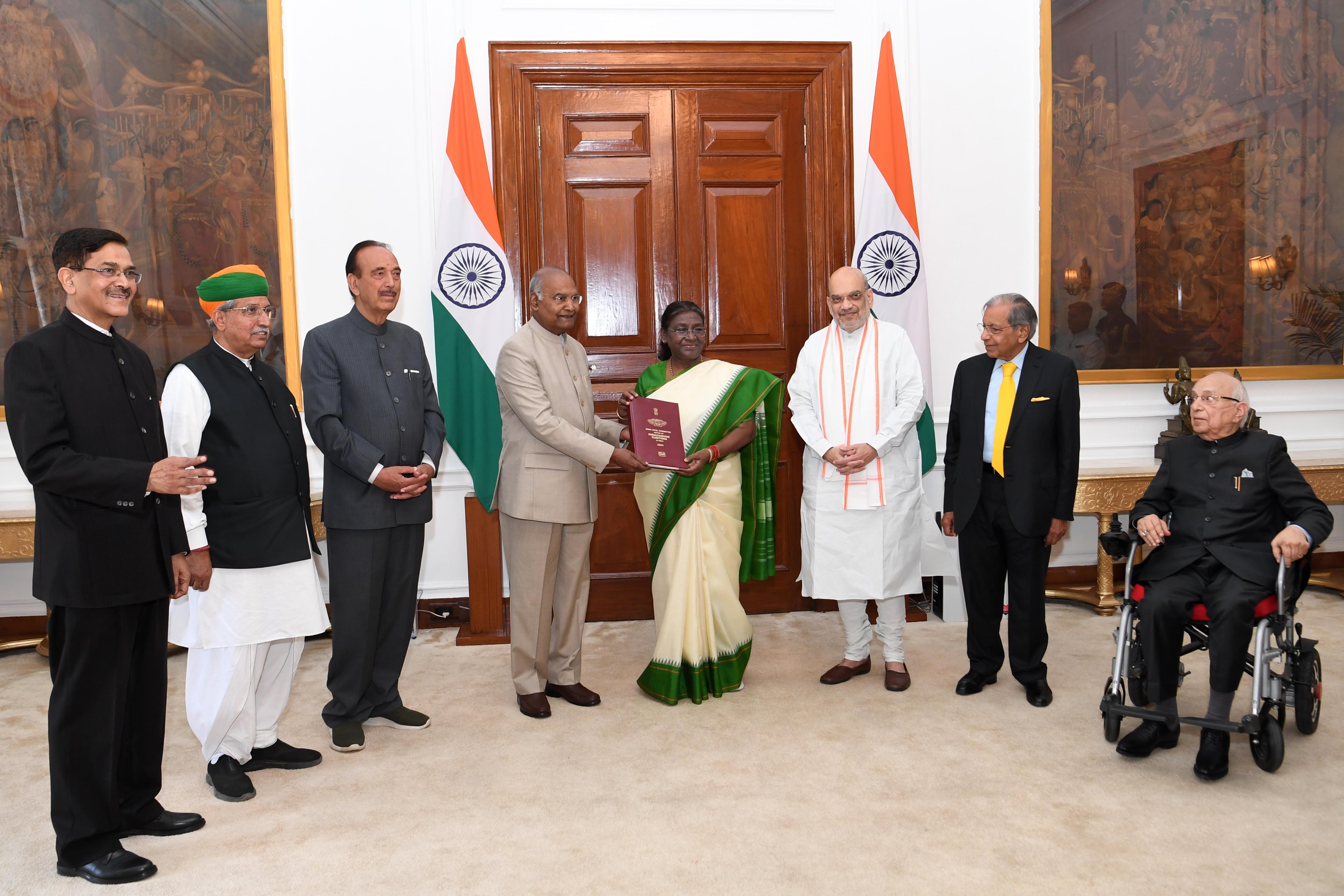Today, the High-Level Committee on ‘One Nation One Election,’ chaired by former President Ram Nath Kovind, convened at Rashtrapati Bhavan to submit its comprehensive report to President Droupadi Murmu.
The report
The Report, spanning 18,626 pages, is the culmination of rigorous consultations with stakeholders, experts, and extensive research conducted over 191 days since its inception on September 2, 2023.
The committee, comprising notable members including Union Home Minister Amit Shah, Union Law Minister Arjun Ram Meghwal, Democratic Progressive Azad Party (DPAP) chief Gulam Nabi Azad, and others, presented the report in a collective effort.
In recent developments, the Committee engaged with representatives from various political parties, including BJP, Trinamool Congress, Samajwadi Party, CPI, CPI(M), AIMIM, RPI, Apna Dal, among others. These parties submitted their suggestions in writing to the committee during these interactions.
How viable are simultaneous elections?
Under the leadership of former President Ram Nath Kovind, the High-Level Committee has actively initiated a consultation process concerning the feasibility of holding simultaneous elections across the nation.
Former President of India Shri Ram Nath Kovind who heads High-Level Committee (HLC) on 'One Nation, One Election' presented the report on simultaneous elections in the country to President Droupadi Murmu along with members of the HLC including Union Home Minister Shri Amit Shah,… pic.twitter.com/wqlPZ3n0FV
— President of India (@rashtrapatibhvn) March 14, 2024
Recently, the Committee also solicited public opinion on the ‘one nation, one election’ issue. A public notice was circulated inviting suggestions from the general public to propose appropriate changes in the existing legal and administrative framework to facilitate synchronized elections nationwide.
The central government, in September last year, established the high-level Committee to delve into the intricacies of ‘One Nation, One Election’ and formulate recommendations for implementing simultaneous elections throughout the country.
The core objective behind the ‘One Nation, One Election’ initiative is to align the timing of Lok Sabha and State Assembly elections across all states, thereby reducing the frequency of polls across the nation.
Although this concept was once practiced until 1967, it encountered disruptions due to various factors such as defections, dismissals, and dissolutions of government.
Also Read: Amit Shah on CAA: BJP promised CAA in 2019, it will not be withdrawn





 No Comments
No Comments






